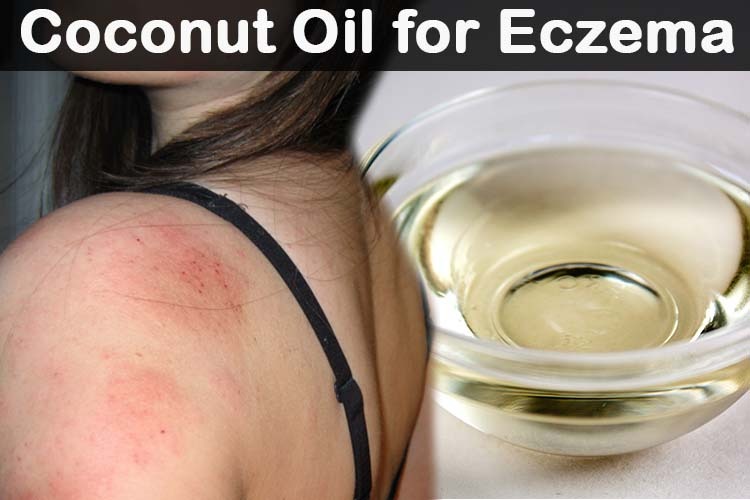Stages of Tooth Abscess:
Understanding the exact infection stage can help to deal with the tooth abscess effectively. Let us see a detailed description and stages of tooth abscess here.
 Tooth is a calcified structure which contains three layers – enamel, dentin and pulp. Enamel is the hardest and protective layer surrounding the tooth. Beneath the enamel, dentin consists of living tissue and tubules which communicate with the teeth nerve. Pulp is the innermost layer of the tooth which contains nerves, blood vessels and pulp cells.
Tooth is a calcified structure which contains three layers – enamel, dentin and pulp. Enamel is the hardest and protective layer surrounding the tooth. Beneath the enamel, dentin consists of living tissue and tubules which communicate with the teeth nerve. Pulp is the innermost layer of the tooth which contains nerves, blood vessels and pulp cells.
Stage 1 – (Enamel Decay): Though enamel is the hardest part of the tooth, it can chip, crack and wear away. Accidents, acid refluxes, excessive soft drink consumption and alcohol consumption can lead to enamel erosion. When food particles or foreign substances enter in to the enamel, cavity is informed. You can observe discoloration of the tooth in this stage. Proper hygiene, balanced diet and topical healing applications can help you restore to tooth.
Stage 2 – (Dentin Decay): The cavity tunnels its way in to the tooth and reach the inner dentine layer. At this level, tooth becomes sensitive to the cold and hot temperatures. At this stage doctor suggests restoration that includes drilling, cleaning and filling with composite.
Stage 3 – (Pulp Decay): Further to the dentin layer, the cavity now reaches its way into the pulp causing infection. The blood vessels, nerves and pulp cells slowly die. In this stage the pain becomes severe and constant. At this stage doctor suggests a root canal treatment.
Stage 4 – (Infected Pulp or Tooth Abscess): When the pulp is completely destroyed, the body defense mechanism develops pus to trap the infection from spreading into the blood stream. This pus filled swelling is referred as tooth abscess. The pain becomes severe and you can observe swelling and redness on the jaw and neck. At this stage a dentist recommends a tooth extraction.
If tooth abscess is neglected or ignored, the infection spreads to the bone and jaw which can cause serious life threatening complications.
Preventing Tooth Decay with Good Oral Hygiene
Good oral hygiene is the first defense you can create to prevent tooth decay. A regular dental routine to maintain a good oral hygiene includes brushing, flossing and rinsing. Apart from dental routine, it is also important to choose toothpaste with some natural ingredients.
Brushing: It is recommended to brush twice in day (in the morning and night) for 2 minutes. Below are few tips you should follow while brushing.
- It is recommended to use a tooth brush with soft bristles. Brushing with hard bristles can lead to enamel erosion.
- It is very important to change your tooth brush once in 2 – 3 months as they wear out quickly and become less effective in removing tartar or plague on the teeth.
- Brushing your teeth in circular motions is the best cleaning practice which ensures maximum clean up.
- On an average, tooth decay is mostly observed in molars (grinding teeth) so clean them with extra care.
- Don’t consume anything till 30 minutes after brushing.
- Don’t brush immediately after consuming carbonated drinks because the alkaline level in the mouth will be increased. The saliva needs sometime to reduce the alkaline level, so it better brush after 30 minutes of consumption.
- Brushing your tongue not only refreshes your breath but also cleans the bacteria present on it.
- It doesn’t really matter whether you use a manual or electric tooth brush. Depending on your convenience you can use any of the two.
Flossing: Flossing is an important regimen of oral hygiene. It helps in removing the food particles and plague under the gum line and between your teeth. It is advised to floss your teeth at least once in a day ideally night time. Below is the detailed description of how to floss your teeth.

- Use about 18 inches of floss.
- Slide the floss gently in the area between teeth and gum.
- Gently stroke 8 to 10 times, up and down to dislodge the food and plaque.
- Avoid snapping the floss in between the gums.
If you have teeth very close to each other and find it difficult to slide the dental floss or not fan of dental flossing then you can use interdental brushes.
Mouth Rinse –
Rinsing will help you remove food particles and debris from your mouth. Yet it is not alternative for brushing and flossing. There are many mouthwash products available in the market. It is good to choose alcohol free mouthwash with fluoride. If you want to avoid chemicals based mouthwashes then salt water is the perfect, safe and most effective alternative. Apart from rinsing, salt water also heals sore throat and gum sores.
How Does Weak Immune System Result Tooth Decay
An imbalance in hormones leads to a weak immune system. When the endocrine glands (hormone secreting glands) function improperly, hormone gets imbalanced. Due to improper diet, stressful lifestyles and less physical exercise will make endocrine glands function inappropriately. Understand which foods affect the functioning of endocrine glands. Below is the detailed description of which glands and how they affect tooth decay.
Pituitary Gland: Pituitary gland is also known as master gland, has two sections – anterior pituitary gland and posterior pituitary gland. The main role of posterior pituitary gland is to work with pancreas to control blood sugar. Imbalanced blood sugar levels can lead to tooth decay. If the posterior pituitary gland cannot regulate blood sugar properly, an imbalance takes place and phosphorous will be pulled out from bones and teeth. The main reason behind the imbalance in functioning of posterior pituitary gland is white sugar. The posterior pituitary gland can be brought back to normal by reducing sugar consumption.
Thyroid Gland: The thyroid gland works with anterior pituitary gland to maintain the calcium levels in the blood. If it does not work properly then blood calcium levels get imbalanced. To maintain the balance, calcium from boned and teeth are drawn out which leaves them weak.
Sex Glands: When testosterone and estrogen levels increase, phosphorous levels in the blood also increase. This results in inflamed gums.
Hypothalamus: Hypothalamus works with parotid gland (largest salivary gland present in the jaw). When hypothalamus communicates with parotid gland, it generates parotid hormone. This parotid hormone triggers a moment mineral rich fluid. This mineral rich fluid is transported to teeth through dental lymph (microscopic channels) in our teeth. This mineral rich fluid is responsible for remineralization of the tooth. Remineralization makes teeth stay strong and defend it from external damaging properties. If the hypothalamus stops signaling parotid gland to release the hormone, the mineral rich fluid will not generated and transported to the teeth. Over the time, teeth get weak and lose its capacity to defend itself, thus leads to tooth decay.
Glands can be brought to proper health by consuming proper diet. With proper working glands, one can even reverse tooth decay.
This Guest Post credit goes to Greenvale Dental Group. They are Greenvale VIC based dental group who are committed to providing an affordable, positive dental experience for ALL age groups.










24 comments
Is there a nature cure for infected tooth rather, than extraction? Please give advice and list of known, safe and permanent cure remdies.
If the tooth is infected then it has to be removed so that it doesn’t spread to other teeth and blood vessels. After extraction and for temporary pain relief you can follow the remedies mentioned in the article – http://wellness.guide/abscess-tooth/
A good dentist tries to save an infected tooth and removes it only as a last resort. Tooth extraction is by far the easier alternative to a challenging root canal treatment with proper medicine.
Can u explain proper diet?
In order to maintain proper dental health one should eat calcium and phosphorous rich food. Both calcium and phosphorous cannot be absorbed directly though food by our body. Vitamins A and D can help our body absorb them. So include calcium, phosphorous, vitamin A and D in your daily diet.
can oregano oil help with healing tooth abscess
Yes, it helps. Apply 1 – 2 drops of diluted oregano oil on the affected tooth. As oregano oil is very strong, you can dilute in olive oil before application. Repeat the application 2 – 3 times a day until you find relief.
I have peppermint oil. But do I have to dilute it before using it. I thought it was too potent to use directly in the mouth. If it needs diluting, then can you tell me with what and to what ratio or much peppermint/dilution
You can dilute few drops of peppermint oil in a tablespoon of any carrier oil (for example – coconut oil or almond oil) or water.
I am fairly sure that I have an a fessed tooth. It’s unbearably painful, sensitive to hear, cold, and especially sugar. My face isn’t swollen but my gums and even the roof of my mouth are swollen and painful when touched. This has been going on for several months. It sort of comes and goes. The odd thing that I am noticing ans hoping that someone may have some advice or information on, is that I’m pretty sure the infection is causing my sinuses to become “stopped up”. Let me explain. The last time this flared up and currently, I felt as if I had a pimple in my nose, but upon examining, there is a hard knot inside my nose. It’s actually not in my nose, but feels as if it’s between the external skin around my nostril and the inner tissue Of my nostril. As if it’s between my nose and the face. I’m assuming this is a sinus cavity. Last time this happened (about a month ago) it was the same type of hard knot but in a different spot inside my nose. Kind of feels like a Little rock under my internal nostril tissue as it it’s not part of my nostril but ends just at my nostril. Any ideas as to what and why. And the roof of my mouth is swollen also. Any advice or insight would be greatly appreciated.
Hi Rebekah,
I’m no expert, just researching as I have another dental abscess. However, as an ex-nurse, I believe what you describe requires urgent medical attention to avoid serious complications. Please see someone asap. Good Luck.
Same thing happened to me over the summer. I had an abscess on a tooth that didn’t even have a cavity and the infection spread into my sinus cavities. The pain, in the swollen knot on the roof of my mouth, eventually get it unbearable and, after wasting time going to the E.R., I paid the $75 and went in to get the problem checked by a real dentist. After the X-ray they let me know that the infection was so bad that they didn’t think I would make it to the end of week. They haf to pull a tooth and cut an incision in the roof of my mouth. They drained out all the infection and put me on antibiotics and steroids. It wasn’t cheap but you do what you have to when it’s your life on the line..
Got abscess tooth. Heard garlic will fix it. Is this true?
Garlic contains antibacterial properties which deal with the infection. It also provides relief from the pain. You can find the remedies related to garlic and other ingredients in this article – http://wellness.guide/abscess-tooth/. Try the remedies regularly to get relief. But it is also important to consult the dentist for removing the infection or abscess. Though garlic kills the infection and pain, it cannot remove out the infection or dead bacteria and pus present in the tooth root.
Is there any way of saving your tooth when the gum at base of tooth looks red and is sore. Is this the early stage
Of a tooth abscess ?
The early stage of a tooth abscess is a cavity (an infection present in the enamel – outer part of the tooth). Once it reaches the gum, the infection has almost killed the pulp of the tooth so there is no way of saving the tooth. The tooth should be extracted and the infection should be cleaned so that it doesn’t spread to other teeth.
I had swollen gums above my (top front) crowned teeth. I was given a cleaning and laser to get rid of bacteria. Now swelling turned into a lump on my gums 2 days after cleaning. Do I need a new crown or just to get it drained? Also, would garlic help at this stage?
Garlic can only help in reducing the pain and control the infection till you reach a dentist. A dentist should diagnose the effect of infection and suggest whether you have to undergo any treatment.
I’m quite concerned that my tooth is growing and its infected. I’m 13 and I’m experiencing extreme pain in my far left bottom side. The gum seems to be big, red and huge and its hard to chew,swallow and open my mouth to speak or just to open it. It make my throat very painful. Half of my face is extremely swollen, please help me!!!!
As per your description, it can be either because of the tooth growing in wrong direction or tooth abscess. We recommend to consult a doctor to find out the actual problem.
I had the same problem as a teenager. Turned out to be all wisdom teeth were growing in sideways. Was never taken to dentist until years later and had to have 7 teeth removed because of it. Have your parents take you to a dentist.
I dont really know how to explain it so bare with me. The gum under my righ bottom mauler is sort of swollen not much though but its visible and kind of white the. tooth its self is brown. Not really any pain as long as i brush and rinse and its been this way for about 4 days now. Any advice?
To reduce the swelling and pain, try clove oil or garlic methods mentioned in the article. Consult a doctor soon to get the tooth checked.
Hello, I have a large chunk of tooth missing but no pain. Could I have an infection and no pain. I have a back pain that seems like organ pain. Could it affect my spleen also?